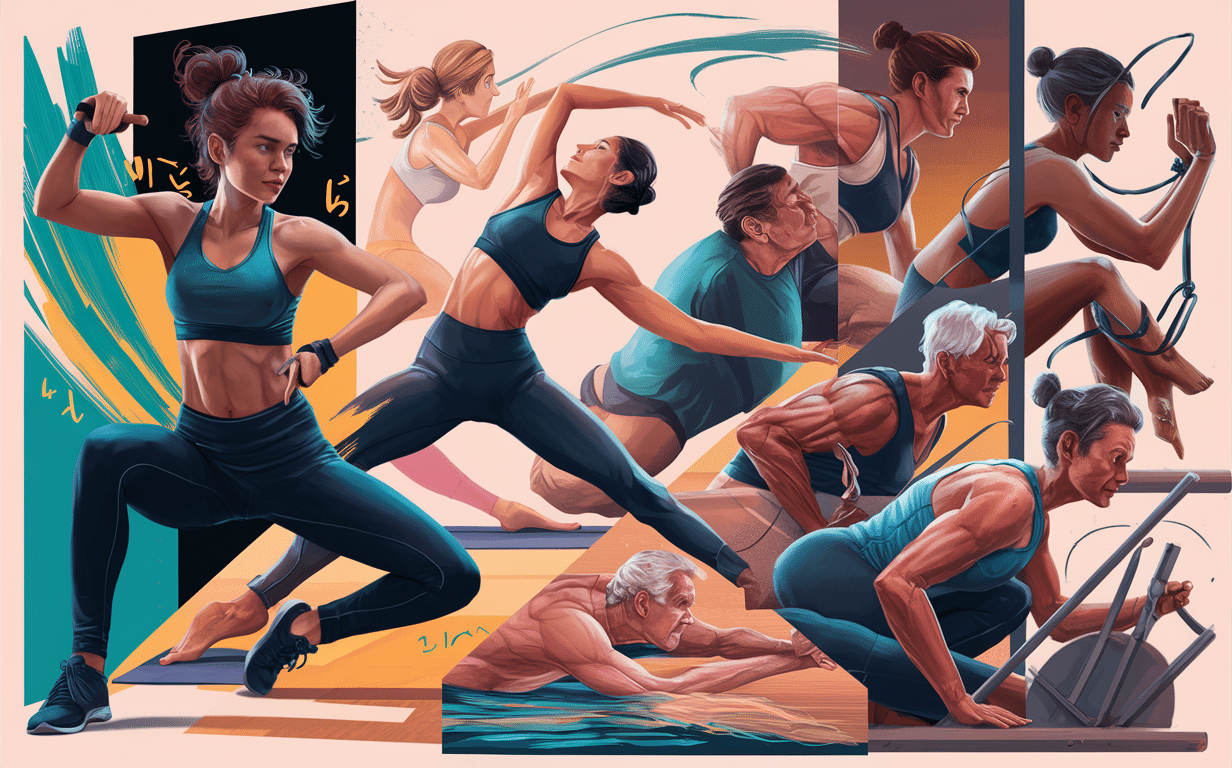
No matter your age or stage of life, a customized fitness program can help you achieve optimal health and wellness. By adapting your workouts to your specific needs and goals, you can maximize results while minimizing the risk of injury. This article will explore how to design effective fitness programs for different life stages, from childhood through the senior years.
During the early years, children develop critical motor skills and habits that lay the groundwork for lifelong fitness. Parents and caregivers should encourage active play through games, sports, and outdoor adventures. Aim for at least 60 minutes of moderate-to-vigorous physical activity each day, broken up into shorter sessions as needed.
Key exercises for kids include:
As children enter adolescence, they can begin more structured training programs under the guidance of a qualified coach or instructor. Resistance exercises using body weight, resistance bands, or light weights can help build muscle and bone density. However, it’s important to avoid overtraining and allow for adequate rest and recovery between workouts.
For adults, the primary goals of fitness are maintaining lean body mass, strengthening bones, and supporting cardiovascular health. The Centers for Disease Control and Prevention recommend at least 150 minutes of moderate-intensity or 75 minutes of vigorous-intensity aerobic activity per week, plus two or more days of muscle-strengthening exercises.
Effective cardio workouts for adults include:
Resistance training should target all major muscle groups, with exercises such as:
| Muscle Group | Sample Exercises |
|---|---|
| Legs | Squats, lunges, step-ups, deadlifts |
| Chest | Push-ups, bench press, chest fly |
| Back | Pull-ups, rows, lat pulldowns |
| Shoulders | Overhead press, lateral raises, rear delt flys |
| Arms | Bicep curls, tricep extensions, dips |
| Core | Planks, crunches, Russian twists |
In addition to these workouts, adults should incorporate stretching and mobility exercises to maintain flexibility and prevent injuries. Yoga, Pilates, and foam rolling are all excellent options.
As we age, our metabolism naturally slows down, and we start to lose muscle mass and bone density. To counteract these effects, it’s important to prioritize strength training and weight-bearing exercises. Aim for two to three resistance workouts per week, using a combination of machines, free weights, and body weight exercises.
Senior Years: Staying Active and Independent
For older adults, the key priorities are maintaining mobility, balance, and independence. Low-impact activities like walking, swimming, and cycling are easy on the joints while providing cardiovascular benefits. Tai chi and yoga can improve balance and flexibility, reducing the risk of falls.
Resistance training is especially important for seniors, as it helps preserve muscle mass and bone density. However, it’s crucial to start slowly and use proper form to avoid injury. Begin with body weight exercises or resistance bands, and gradually progress to light weights as strength improves.
Sample senior fitness routine:
Warm-up with 5-10 minutes of walking or stationary cycling
Perform 8-12 reps of each strength exercise, resting 30-60 seconds between sets
Bodyweight squats or chair squats
Heel raises and toe raises for ankle strength
Finish with 10-15 minutes of balance and flexibility exercises
Single-leg stands or tandem stance
By incorporating these exercises into a regular routine, seniors can maintain their strength, balance, and independence well into their golden years. However, it’s always a good idea to consult with a doctor or physical therapist before starting a new fitness program, especially if you have any pre-existing health conditions or concerns.
Pregnant and postpartum women have unique fitness needs and considerations. During pregnancy, it’s generally safe to continue with a modified version of your regular workout routine, as long as you have clearance from your healthcare provider. However, you may need to avoid certain activities like contact sports, hot yoga, or exercises that involve lying on your back for extended periods.
Low-impact cardio options for pregnant women include:
Strength training can help prepare your body for the physical demands of pregnancy and childbirth. Focus on exercises that target the legs, back, and core, such as:
| Trimester | Recommended Exercises | Cautions |
|---|---|---|
| First | Walking, swimming, modified strength training | Avoid overheating, contact sports |
| Second | Low-impact cardio, prenatal yoga, light weights | Listen to your body, modify as needed |
| Third | Walking, stretching, pelvic floor exercises | Avoid lying on back, balance concerns |
Postpartum, it’s important to allow your body time to heal and recover before jumping back into a full exercise routine. Start with gentle walking and core engagement exercises like diaphragmatic breathing and pelvic tilts. Gradually progress to low-impact cardio and light strength training, focusing on rebuilding core and pelvic floor strength.
If you experience any pain, heaviness, or urinary incontinence during exercise, stop and consult with a pelvic health physiotherapist. They can provide personalized guidance on how to safely return to fitness while supporting your body’s recovery.
No matter your age or stage of life, regular physical activity is essential for optimal health and wellness. By tailoring your fitness program to your specific needs and goals, you can achieve lasting results while minimizing the risk of injury or burnout.
Remember to start slowly, listen to your body, and seek guidance from qualified professionals when needed. With consistency and dedication, you can unlock your full fitness potential at every stage of life.